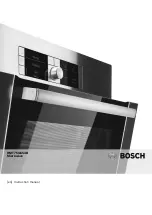
Hum, Noise and Mic Orientation
All dynamic microphones, including ribbons, utilize powerful
magnets in their motor assemblies and matching transformers,
and are, to some degree, susceptible to picking up stray alternat-
ing magnetic fields. Power transformers (such as those found in
guitar amplifiers) and alternating current motors are the most
likely sources of radiated noise. Building wiring and electrical
utility transformers are other likely sources. A well-designed
microphone provides shielding to minimize the effects of stray
magnetic radiation. In some cases complete isolation is impossi-
ble and the result is usually hum or buzz. Passive ribbon micro-
phones can potentially manifest this condition to a greater degree
because of their higher gain requirements. Even an active ribbon
microphone like the R-122 is not completely immune to this phe-
nomenon. With vintage ribbon microphones that employ large
bulky magnet structures, the problem can be worse. The cure for
this problem is to identify the source of the noise and move the
microphone away from it. Another trick is to alter the orientation
of the microphone in such a way that the noise is cancelled out. If
you ever experience this situation while in the studio, try rotating
the microphone to identify the “null” point, then reposition the
mic and the sound source.
The Sweet Spot
Finding and Working with the Sweet Spot
Good engineers know the importance and benefits of finding and
working with the “sweet spot” of a given microphone. The sweet
spot is usually
defined as the optimum placement (working dis-
tance and angular position) of any microphone relative to the
sound source.
Each microphone has its own sweet spot whether it is a ribbon,
dynamic or condenser type. The sweet spot will vary with the
type of sound source and its volume intensity, the polar pattern of
the microphone and how consistent it is with frequency, and the
acoustic environment.
11













































